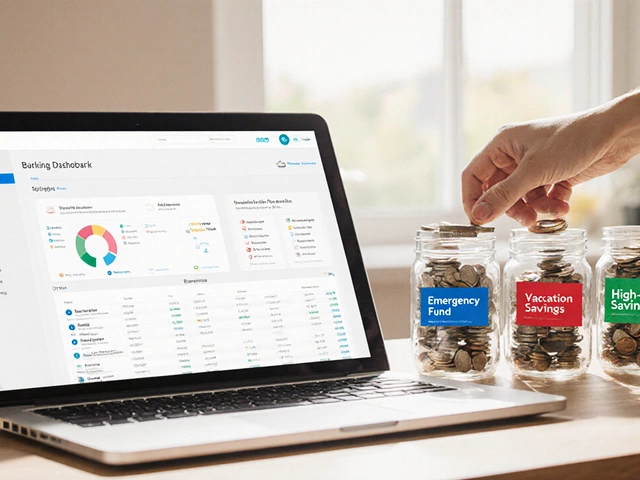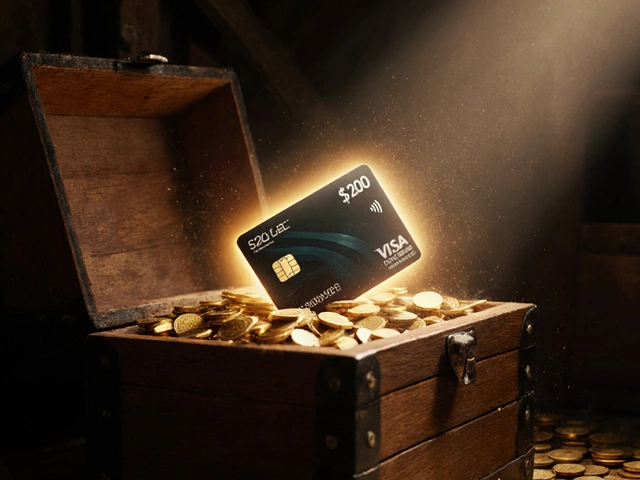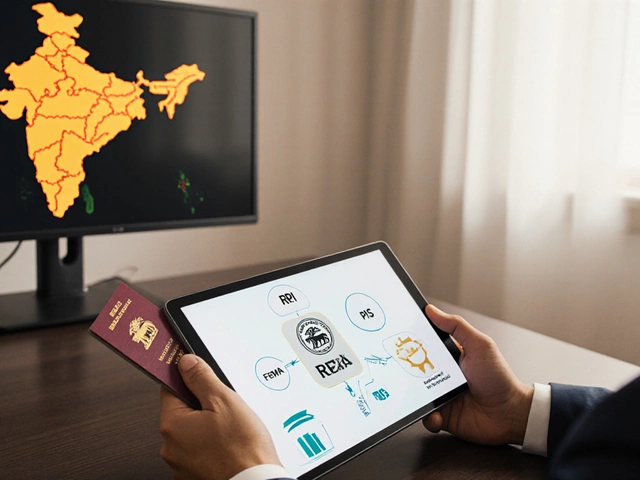
Ever looked at your credit card statement and wondered what it’d be like to have a $25,000 limit? That number can feel huge—because, honestly, it is. Most credit cards in the U.S. have limits somewhere between $2,000 and $10,000. If you got approved for a $25,000 limit, you’re sitting in a totally different league.
So, what does this big number actually mean? For starters, banks see you as a pretty dependable borrower. They don’t just hand out five-figure limits to everyone. Factors like a steady income, a strong credit score (usually above 740), and years of positive credit history come into play. If your limit is up here, you’ve already been winning at the credit game in most cases.
But holding a $25,000 credit limit isn’t just about bragging rights. There’s more to it than feeling fancy. The way you use (or don’t use) that limit can make a real difference for your financial health. High limits have perks, but let’s be real—they come with their own set of traps if you aren’t careful. Ready to see if you’re truly making the most of a $25,000 limit or if it could actually trip you up?
- What Does a $25,000 Credit Limit Mean?
- Who Gets Approved for Big Limits Like This?
- Benefits and Risks of High Credit Limits
- How to Manage a $25,000 Limit Wisely
What Does a $25,000 Credit Limit Mean?
Having a $25,000 credit limit means your card issuer trusts you with a lot more spending power than most people get. According to Experian’s 2024 Consumer Credit Review, the average credit card limit in the U.S. is about $13,000—so $25,000 is nearly double what most cardholders see.
This kind of credit limit isn’t handed out randomly. Lenders look at your credit score, income, debt-to-income ratio, and your payment track record before offering such a big number. Folks with a limit like this usually have strong credit—think FICO scores in the "excellent" range (above 740), low credit utilization, and years of managing credit wisely.
Let’s talk about what having a high limit actually does for you. Here are the major points:
- More Flexibility: You can make larger purchases or handle emergencies without maxing out your card.
- Better Credit Utilization: With a higher limit, it’s easier to keep your balances low compared to your total limit, which can help your credit score.
- Status Symbol: Big limits often signal to banks (and sometimes to friends or employers) that you’re financially responsible.
But it’s not just about convenience. A $25,000 limit also comes with responsibility. Go wild with spending, and you could rack up debt you can’t realistically pay off. Plus, maxing out even a chunk of that limit will hit your credit score harder just because the numbers are bigger.
Here’s a quick look at how a $25,000 limit compares to the U.S. average card limit, based on 2024 data:
| Credit Limit | U.S. Average | $25,000 Limit |
|---|---|---|
| Amount | $13,000 | $25,000 |
So, if you’ve been offered or already have a $25,000 limit, you’re not just getting extra room to spend—you’re stepping into a category that says a lot about how lenders see your financial game.
Who Gets Approved for Big Limits Like This?
Getting a $25,000 credit limit isn’t something that happens by accident. Card issuers look for certain profiles before unlocking the vault. So, what’s on their checklist?
- High Credit Score: The magic number is usually 740 or higher. People in this range have a long record of on-time payments and low debt balances. Banks trust them more.
- Solid Income: Lenders want to know you can handle bigger bills if you spend up to your credit limit. Many banks like to see annual incomes above $80,000, and for business cards even higher. They check this on your application.
- Low Debt-to-Income Ratio: If you already owe a lot compared to what you make, even a great credit score can’t always save you. Lenders love it when your monthly payments add up to less than 36% of your income.
- Long, Clean Credit History: People who get approved usually have 7+ years of active credit accounts with zero major negative marks—no recent late payments, collections, or bankruptcies.
- Existing Relationship with the Bank: If you’ve been with a bank for years, especially with a checking or savings account in good standing, they’re more likely to boost your card limit.
Want some hard numbers? Check out this quick snapshot from a credit industry report in 2024:
| Annual Income | Avg. Highest Credit Limit Approved |
|---|---|
| $50,000 - $74,999 | $12,800 |
| $75,000 - $99,999 | $18,500 |
| $100,000+ | $26,400 |
Your income and credit profile really matter. If your job pays six figures and your record is spotless, you’re in the hot zone for a high credit limit. But there’s another piece—how you use your current cards. If you always pay on time and use way less than your total limit (say, under 20%), banks see you as a low-risk spender. They’re more likely to hand over that $25K line.
Getting approved also depends on the card type. Premium travel cards, high-end rewards cards, and some business accounts are much more likely to offer these upper-tier limits. You won’t see many starter cards with limits even close to this league.

Benefits and Risks of High Credit Limits
Landing a $25,000 credit limit gives you some real advantages, but also comes with a few hidden dangers if you’re not paying attention. Let’s break down both sides so you know exactly what you’re signing up for.
First, let’s look at the upsides. A high credit limit can actually help boost your credit score. The reason? It lowers your credit utilization ratio—the percentage of your limit you’re using. For example, if you’re carrying a $2,500 balance on a $25,000 limit, your utilization is only 10%. Lenders like to see this number below 30%, and the lower, the better. That’s huge when it comes to qualifying for future loans or getting lower interest rates.
Another nice perk: a big cushion for surprise expenses. If your car's transmission goes or you end up with a sudden hospital bill, you have the space to cover it. Plus, many cards with high limits also come with better rewards, perks like airport lounge access, or premium customer service.
- Flexibility to handle emergencies without maxing out your card
- Better rewards and exclusive offers from card issuers
- More room to keep spending without hurting your credit utilization
But it’s not all sunshine. With great power comes great responsibility. A high credit limit can tempt you to spend more, simply because it feels like you’ve got all the money in the world at your fingertips. Overspending is a real risk here. It’s easy to lose track and rack up a bill that’s tough to pay off.
And if you do end up carrying a balance, interest charges on a large amount can snowball fast. Even at a typical credit card rate of around 22%, letting a few grand sit on your card can mean hundreds in interest every month.
| Balance | APR | Monthly Interest |
|---|---|---|
| $5,000 | 22% | $91.67 |
| $10,000 | 22% | $183.33 |
Plus, banks can get nervous if you suddenly start using a huge chunk of your credit limit all at once. They watch for changes in how you spend, and too much high spending could even lead to a limit decrease or a freeze if they think your behavior looks risky.
The best move? Treat your high limit as a tool, not a target. Use what you need, but don’t feel pressured to spend more just because you can. That’s how you keep your finances—and your peace of mind—on track.
How to Manage a $25,000 Limit Wisely
If you’ve got a $25,000 credit limit, it can be tempting to kick back and start swiping. But slow down—managing a big limit smartly is where the real advantage happens. The last thing you want is to end up in debt or tank your credit score.
First, understand your credit utilization ratio. This is the percent of your available credit that you’re actually using. Experts say to keep it under 30% to help your credit score, but if you can stay under 10%, that’s even better. With a $25,000 limit, that means trying to never owe more than $2,500 at any time. Why does this matter? Credit scoring models, like FICO, put a lot of weight here—going above 30% can lower your score, even if you pay in full later.
Watch out for spending creep. It’s easy to justify a bigger purchase or two because, hey, you’ve got the room. But a big limit isn’t extra income. Use your card for stuff you already buy, like groceries or gas, and pay it off each month. That way, you’re building positive history without falling into a debt trap.
Want to maximize perks like cashback or travel rewards? Sure, a bigger limit gives you more flexibility to rack up points, but only do this with expenses you’d be making anyway. Chasing rewards with new, unplanned spending can get expensive fast.
- Set alerts for due dates and spending levels, so you never miss a payment or go on autopilot with your limit.
- Check your statements each month for mistakes or fraud. Higher limits sometimes attract more attention from scammers.
- Request lower APRs if your credit has improved. Lenders may cut you a better deal if you’ve handled a $25,000 limit responsibly.
- Don’t close cards unless you have to. Length of credit history helps your score, and older cards with big limits can make you look less risky to future lenders.
It’s worth noting that only about 10% of U.S. credit card users have limits above $20,000, according to Experian’s 2024 Consumer Credit Review. So if you’re in this group, staying sharp with your spending and payment habits can put you way ahead.
Your high credit limit is a tool—but just like any tool, it works best when you know how (and how much) to use it.







Write a comment